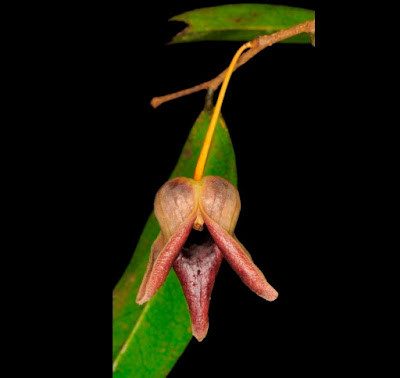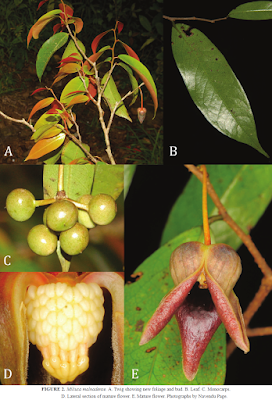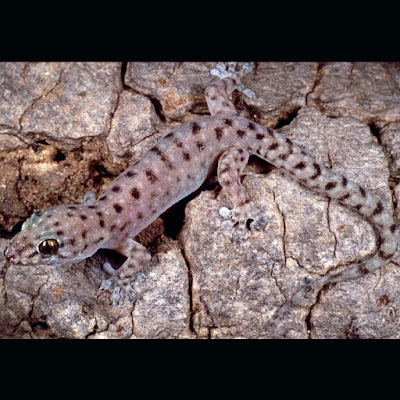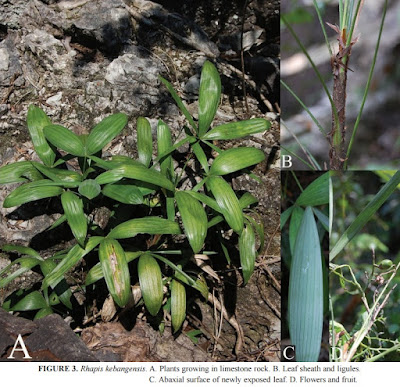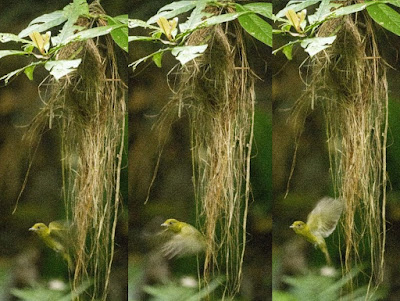[Most Recent Entries] [Calendar View]
Friday, April 29th, 2016
| Time | Event | ||||
| 4:00p | [Botany • 2016] Miliusa malnadense • A New Species of Miliusa (Annonaceae) from the Western Ghats of Karnataka, India
Within Magnoliales, Annonaceae is the most species-rich family (Chatrou et al. 2012). Miliusa Leschenault ex De Candolle (1832: 213) is placed in tribe Miliusae, subfamily Malmeoideae, according to the recent infrafamilial classification (Chatrou et al. 2012). Chaowasku et al. (2014) provided insights into the evolutionary relationships of tribe Miliusae, and Chaowasku & Keßler (2013) reconstructed the phylogeny of Miliusa with four well-supported clades. Miliusa is distributed across the Austro-Malesian region with most species exhibiting a restricted distribution to certain areas (Mols & Kessler 2003). Species known from India exhibit a high degree of endemism (Kundu 2006). ........
Miliusa malnadense Page & Nerlekar, sp. nov., This species can be distinguished by the presence of pubescent young branches, coppery red young leaves, inner petals glabrous outside, apices and margins densely puberulous inside and purple coloured, carpels elongated, curved and pubescent throughout its length, ovoid-oblong stigma and globose monocarps Etymology:— The specific epithet ‘‘malnadense’’ refers to the Kartanaka part of the Western Ghats from Shimoga to Kodagu which is the currently known distribution range of this species. Distribution and associated species :— Miliusa malnadense is so far known only from the Kudremukh national park in the Western Ghats mountain range which is one of the global biodiversity hotspots (Myers et al. 2000). Miliusa malnadenseis probably restricted to forests at elevations above 1000 m in the Shola-Grassland ecosystem that harbor significant proportion of endemic taxa (Robin & Nandini 2012). Associated species observed in the type locality were species of the genus Ochlandra Thwaites, Lasianthus Jack, Cinnamomum Schaeffer, Myristica dactyloides Gaertner, Euonymus indicus B.Heyne ex Wall. and Schefflera micrantha (C.B.Clarke) Gamble. Conservation status:— Data Deficient. Navendu Page and Ashish Nerlekar. 2016. A New Species of Miliusa (Annonaceae) from the Western Ghats of Karnataka, India. Phytotaxa. 245(1):79-83 . DOI: 10.11646/phytotaxa.245.1.10 New species of evergreen tree for India http://www.fauna-flora.org/news/new-spec New plant species discovered in Western Ghats - Nature India http://www.natureasia.com/en/nindia/arti | ||||
| 4:28p | [Herpetology • 2016] Systematics of Small Gehyra (Squamata: Gekkonidae) of the southern Kimberley, Western Australia: Redescription of G. kimberleyi Börner & Schüttler, 1983 and Description of A New Restricted Range Species
Abstract Ongoing fieldwork and molecular research continues to reveal that the monsoonal tropics of northern Australia contain more vertebrate species than currently recognised. Here we focus on two morphologically distinctive, yet unrecognised forms in the genus Gehyra from the southern Kimberley region and surrounding deserts. We base our descriptions on a combination of unpublished genetic data and a morphological examination of voucher specimens. We recognise and redescribe G. kimberleyi, a species with a broad distribution extending over most of the south-west Kimberley, across the Great Sandy Desert and into the far northern Pilbara. This species has been previously assigned to G. pilbara owing to its frequent occurrence on termite mounds and short snout, but can be distinguished from G. pilbara and other regionally sympatric Gehyra by its moderate body size, moderate number of pre-cloacal pores in males (12–17) and aspects of dorsal colouration. We also describe Gehyra girloorloo sp. nov., a small rock-dwelling species with a short snout, low number of pre-cloacal pores in males (8–11) and pinkish-grey dorsal colouration with alternating series of indistinct pale spots and irregular transversely-aligned dark blotches. The new species appears to be restricted to a relatively small region of exposed limestone karst in the south-west Kimberley and is entirely circumscribed by morphologically similar congeners. Keywords: Australian Monsoonal Tropics, biodiversity, endemism, gecko, limestone, lizard, short range endemic, Reptilia Paul M. Oliver, Gayleen Bourke, Renae C. Pratt, Paul Doughty and Craig Moritz. 2016. Systematics of Small Gehyra (Squamata: Gekkonidae) of the southern Kimberley, Western Australia: Redescription of G. kimberleyi Börner & Schüttler, 1983 and Description of A New Restricted Range Species. Zootaxa. 4107(1); DOI: 10.11646/zootaxa.4107.1.2 | ||||
| 4:47p | [Botany • 2016] A Revision of Rhapis (Arecaceae) Abstract A revision of the Asian palm genus Rhapis is given based on study of 167 herbarium specimens of wild origin from A, AAU, BH, BK, BKF, GH, HN, HNU, HPNP, IBSC, K, KUN, L, MO, NY, P, SYS, US and application of the Phylogenetic Species Concept to a database comprising 13 qualitative and 16 quantitative variables. Eleven species are recognized, including two new ones. Two species are divided into subspecies. Keywords: dioecy, Palmae, Vietnam, China Introduction Rhapis is the name given to small, clustering, fan-leaved, dioecious palms that can form large colonies by rhizomes in the understory of tropical and subtropical Asian forests, often on limestone soils. The species are distributed from southern China through Vietnam, Laos, Thailand, and Cambodia, with an outlying population in western Sumatra. The first revision of the genus was that of Beccari (1931), where five species were recognized. Bailey (1939) recognized nine species, and in the most recent revision, Hastings (2003) recognized eight species. .............. Rhapis Linnaeus f. in Aiton (1789) 1. Rhapis evansii Henderson sp. nov. Type:— LAOS. Vientiane: Vangvieng district, Ban Nathong, Tham Poukham, 250–350 m, 1 August 1999, T. Evans 56 (holotype K!, barcode K000462531). (Fig. 1) 2. Rhapis excelsa (Thunberg) Henry in Rehder (1930: 153). Chamaerops excelsa Thunberg (1784: 130). Lectotype (designated by Hastings 2003):— JAPAN. No locality, no date, C. Thunberg sheet number 24386 (lectotype UPS n.v., UPS image!)Trachycarpus excelsus (Thunberg) Wendland in Gay (1861: 429). 3. Rhapis gracilis Burret (1930: 883). Lectotype (here designated):— CHINA. Prov. Kwangtung: Win Foo, 180 m, 3 October 1928, S. Sin 5338 (lectotype IBSC!) (the holotype at B was destroyed) 4. Rhapis humilis Blume (1836: 54). Lectotype (designated here):— JAPAN. No locality, no date, C. Thunberg sheet number 24385 (lectotype UPS n.v., UPS image!) 5. Rhapis kebangensis Henderson sp. nov. Type:—VIETNAM. Quang Binh: Ba Trach district, Phong Nga-Ke Bang National Park. 20 October 2015, A. Henderson & Nguyen Quoc Dung 4048 (holotype FIPI!, isotype NY!). (Fig. 3) 6. Rhapis laosensis Beccari (1910: 225). Lectotype (designated by Hastings 2003):—LAOS. Saraburi, no date, C. Thorel 3154 (lectotype P!, isolectotype FI!) 6a. Rhapis laosensis subsp. laosensis 6b. Rhapis laosensis subsp. macrantha (Gagnepain) Henderson comb. & stat. nov. Basionym: Rhapis macrantha Gagnepain (1937: 160). Type:—VIETNAM. Nord-Annam, Province de Nghe-An (Vinh), Réserve forestière de Co Ba (Ke-Nhe), 15 May 1914, F. Fleury 32535 (holotype P!) 7. Rhapis micrantha Beccari (1910: 220). Lectotype (designated by Hastings 2003):—VIETNAM. Dong Ban mountains, Kien Khe 19 April 1884, H.-F. Bon 2345 (lectotype P!, isolectotype FI!) 8. Rhapis puhuongensis Trudgen, Tran Thi Phuong Anh & Henderson (2008: 182). Type:—VIETNAM. Nghe An: Quy Hop district, Pu Huong Nature Reserve, behind Reserve office, 300 m, 19°20’N, 105°10’E, 18 March 2007, X. P. Vu, V. D. Nguyen, H. Q. Bui, C. T. Nguyen R. de Kok, T. Utteridge, A. Moore, M. Briggs, M. Trudgen, V. C. Nguyen & D. D. Tran HNK 1748 (holotype HN n.v., isotypes AAU!, K!, NY!, P!) 9. Rhapis robusta Burret (1937: 587). Lectotype (here designated):— CHINA. Kwangsi: Lungchow, 7 July 1935, S. Ko 55429 (lectotype IBSC!)(the holotype at B was destroyed) 10. Rhapis subtilis Beccari (1910: 227). Type:— LAOS. Lakon, 1866–1868, C. Thorel 3099 (holotype P!, isotype FI!) 10a. Rhapis subtilis subsp. subtilis 10b. Rhapis subtilis subsp. siamensis Henderson comb. & stat. nov. Basionym: Rhapis siamensis Hodel (1997: 19). Type:—THAILAND. Phatthalung: 13 km N of Phatthalung and 5 km E of main road along side road to coast, 25 April 1997, D. Hodel & P. Vatcharakorn 1652 (holotype BK n.v., isotypes BH!, MO!) 11. Rhapis vidalii Averyanov, Nguyen Tien Hiep & Phan Ke Loc (2006: 12). Type:—VIETNAM. Hoa Binh: Mai Chau district, Van Mai municipality, highway 7, 15 km post, between 20°35’N, 105°02’E and 20°34’N, 105°02’E, 300–350 m, 12 December 2002, D. Harder, N. T. Hiep, L. Averyanov, DKH 8123 (holotype HN n.v., isotype LE n.v.) Andrew HENDERSON. 2016. A Revision of Rhapis (Arecaceae). Phytotaxa. 258(2): 137–152. DOI: 10.11646/phytotaxa.258.2.3 | ||||
| 5:09p | [Ornithology • 2016] Reproductive Biology of the Sapayoa Sapayoa aenigma, the “Old World suboscine” of the New World
ABSTRACT The Sapayoa (Sapayoa aenigma), a low-density resident of Chocó rainforests from Panama to Ecuador, has long perplexed ornithologists. It was originally described as a manakin (Pipridae), but molecular work has revealed its closest living relatives to be Old World suboscines (Eurylaimides) and supported its placement in the monotypic family of Sapayoidae. Despite such phylogenetic intrigue, little is known about the Sapayoa's general life history or reproductive biology; only one nest has been described. We present information on 2 actively attended and 13 inactive Sapayoa nests in Darién National Park, Panama. We provide the first detailed description of individual effort at an active nest, family group dynamics during the nesting period, the plumage of immature birds, and the range of vocalizations produced. We also present the first documentation of cooperative breeding and compile several recent nesting observations, extending the published Sapayoa breeding period by several months. Furthermore, we describe unusual behaviors among provisioning birds, including mounting between individuals of the same sex and mounting of a female by immature male helpers during chick provisioning. The receiving individual gave a conspicuous solicitation display before each mounting. Finally, we highlight elements of the Sapayoa's natural history that echo its Old World relatives and contrast with members of the New World Tyranni. For example, the Sapayoa resembles the eurylaimid broadbills—and differs starkly from the manakins—in diet, nest structure, breeding system, and mode of parental care. Keywords: cooperative breeding, helpers, mounting, Old World suboscines, Sapayoa aenigma, Sapayoidae Sarah A. Dzielski, Benjamin M. Van Doren, Jack P. Hruska, and Justin M. Hite. 2016. Reproductive Biology of the Sapayoa (Sapayoa aenigma), the “Old World suboscine” of the New World [Biología reproductiva de Sapayoa aenigma, el “suboscín del Viejo Mundo” que habita el Nuevo Mundo]. The Auk. 133(3); 347-363. DOI: 10.1642/AUK-16-5.1 Field Study Helps Confirm The Sapayoa Is Like No Other Bird In The New World An Old World bird in a New World rainforest http://phy.so/380909066 via @physorg_com The Sapayoa, a rainforest bird from Central and South America, is an evolutionary enigma—genetic analysis shows that its closest relatives are bird species living across the ocean in Asia and Africa. Now, new research in The Auk: Ornithological Advances demonstrates for the first time that its natural history links it to its evolutionary relatives thousands of miles away. How the Sapayoa ended up so far from other members of its lineage remains a mystery, and little is known about its reproductive biology or social behavior. However, new field work in Panama by Sarah Dzielski and Benjamin Van Doren of Cornell University and their colleagues reveals that Sapayoas consistently build nests that hang over the water along ravine-bottom streams. One of the active nests they observed was attended by a family group comprised of an adult male and female and two immature males, all four of which brought food to the two chicks. The researchers were surprised by the social behavior they observed, which included mounting between individuals of the same sex, possibly to establish dominance and maintain social cohesion. These are the first extended observations of Sapayoa breeding behavior, and they provide hints at how this unusual bird is connected with its roots. Many of the Sapayoa's Old World relatives are cooperative breeders, getting help from family groups, and the pear-shaped hanging nest also is consistent with Old World "suboscines," the group of birds to which Sapayoas belong. Dzielski, Van Doren, and their colleagues Jack Hruska and Justin Hite searched for Sapayoa nests as part of an expedition to Panama's Darién National Park in summer 2014, observing the family group at their focal nest for more than 70 hours over ten days. "Nest searching was always an adventure," says Dzielski. "We found countless abandoned nests, and while checking inside for eggs or evidence that the nest was active, we found all sorts of surprises. In a few instances, a large grasshopper the size of a mouse hopped out from under the flap and scared the daylights out of us!" "The Sapayoa is so different from other passerine birds that it is currently placed in its own family, Sapayoidae, but relatively little is known about its natural history," adds Van Doren. "This gap in scientific knowledge was the reason we traveled to eastern Panama to learn about this enigmatic species. We hoped that more information about the Sapayoa's natural history would cast its surprising evolutionary relationships in a new and clearer light." "The Sapayoa has long been a mystery bird. When my colleagues and I identified it as the only Old World suboscine in the New World in 2003, it only became more mysterious," says Jon Fjeldså of the University of Copenhagen, who led the research team that first identified the Sapayoa's unusual origins. "How did it arrive in South America? Why does it resemble a manakin? And does it still behave like an Old World suboscine? I am excited to learn that it indeed does!" RESUMEN Sapayoa aenigma, un ave residente en bajas densidades en los bosques húmedos del Chocó desde Panamá hasta Ecuador, ha confundido a los ornitólogos por bastante tiempo. Aunque la especie originalmente fue descrita como un saltarín (Pipridae), estudios moleculares recientes revelaron que sus parientes más cercanos son los suboscinos del viejo mundo (Eurylaimides) y sustentan su ubicación en la familia monotípica Sapayoidae. A pesar de esta intriga filogenética se sabe muy poco sobre la historia de vida o la biología reproductiva de Sapayoa; sólo se ha descrito un nido. En este trabajo presentamos información de 2 nidos activos y 13 nidos inactivos de Sapayoa encontrados en el Parque Nacional Darién, Panamá. Presentamos la primera descripción detallada del esfuerzo individual en un nido activo, la dinámica del grupo familiar durante el periodo de anidación, el plumaje de las aves inmaduras y el repertorio de vocalizaciones. También presentamos la primera evidencia de cría cooperativa y recopilamos varias observaciones recientes de anidación que extienden el periodo reproductivo conocido de Sapayoa en varios meses. Además describimos comportamientos inusuales entre las aves que proveen alimento a sus crías, incluyendo la monta entre individuos del mismo sexo y entre un individuo joven y una hembra adulta durante la alimentación de los polluelos. El individuo que recibía la monta ejecutaba antes un despliegue para solicitarla. Finalmente, resaltamos elementos de la historia natural de Sapayoa que se asemejan a las de sus parientes del Viejo Mundo y contrastan con las de miembros de Tyranni en el Nuevo Mundo. Por ejemplo, Sapayoa se asemeja a los Eurylaimidae (y difiere drásticamente de los Pipridae) en dieta, estructura de los nidos, sistema reproductivo y modo de cuidado parental. Palabras clave: ayudantes del nido, cría cooperativa, monta, Sapayoa aenigma, Sapayoidae, suboscines del viejo mundo |
| << Previous Day |
2016/04/29 [Calendar] |
Next Day >> |
